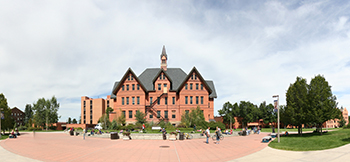Facility Upgrades Equal Energy Savings at MSU
 BOZEMAN, Mont. — Montana State University (MSU) recently announced that its first energy savings performance contract (ESPC) has exceeded its projected energy savings by more than 15 percent. The project included a number of improvement measures designed to increase the university’s energy performance, reduce maintenance costs, improve occupant comfort and reduce the campus’ overall carbon footprint.
BOZEMAN, Mont. — Montana State University (MSU) recently announced that its first energy savings performance contract (ESPC) has exceeded its projected energy savings by more than 15 percent. The project included a number of improvement measures designed to increase the university’s energy performance, reduce maintenance costs, improve occupant comfort and reduce the campus’ overall carbon footprint.
“The utility savings from this first phase of work have outperformed our expectations,” said MSU Assistant Facilities Director Dan Stevenson in a statement. “These projects have allowed us to proactively control our utility costs and build infrastructure that will last for decades.”
The Bozeman office of Seattle-headquartered design, construction and energy services firm McKinstry performed the ESPC. The $8 million project was completed in 2013 following an intensive energy audit, which laid out numerous opportunities for utility savings, according to a statement by McKinstry. The company guaranteed the university an annual savings of more than $370,000 from reductions in energy, water, steam and natural gas use as well as peak demand.
After the project’s first year, McKinstry confirmed the ESPC’s actual savings were approximately $429,000 — 15 percent higher than the original projection. Considering those initial savings projections were calculated using the state utility rates established when the original energy audit occurred in 2010 — in which time state utility rates have increased by approximately 7 percent — the ESPC has actually resulted in an even greater annual energy savings, according to a statement by McKinstry.
The project’s first phase included both mechanical and lighting upgrades in several auxiliary buildings, including the Brick Breeden Fieldhouse, which hosts sporting events, concerts and trade shows. University students advocated for and largely supported the energy upgrades, which are helping the school meet its sustainability goals while also improving livability and comfort in facilities such as the residence and dining halls, according to McKinstry. The resulting reductions in utility consumption have reduced the university’s annual carbon footprint by more than 10,000 metric tons of carbon dioxide, which is equivalent to removing 1,000 average homes from the energy grid, the company said.
“Montana State University has been a trailblazer for public organizations in the state,” said Jeff Davis, business unit manager for McKinstry, in a statement. “Their decision to forge ahead with energy upgrades across dozens of campus buildings demonstrates their long-term vision for the health and sustainability of the university.”
Two subsequent projects have also been completed on the MSU campus, and any energy and cost savings resulting are currently being measured and verified.
The energy savings performance contracting legislation that supported the project was enacted in Montana in 2007. The university’s ESPC was the first of its kind by an institution within the Montana University System. There also is currently a collaborative effort continuing within the state to improve statutory language and determine how services can be improved to encourage mutually beneficial ESPCs for state and local government and K-12 schools, according to the American Council for an Energy Efficient Economy.
